
|
|
|
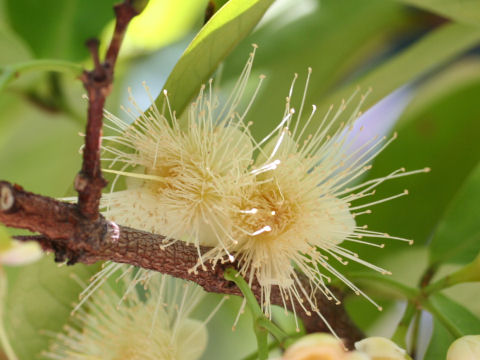 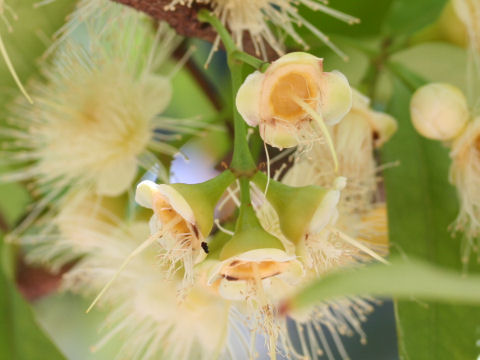 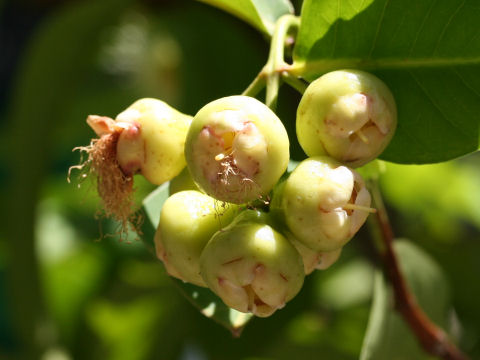 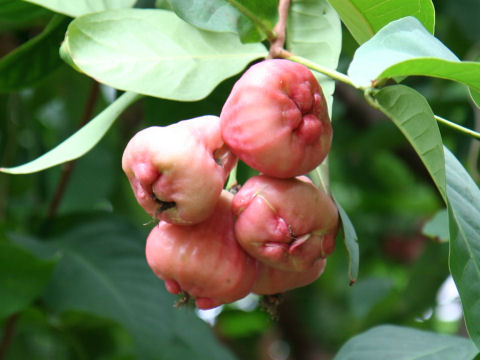 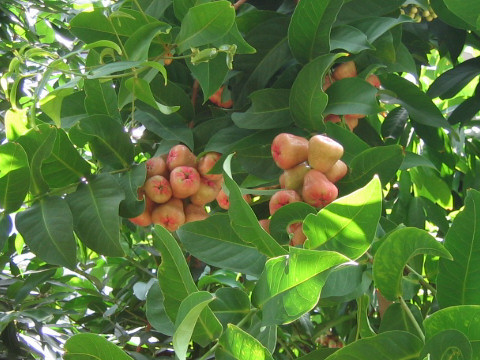 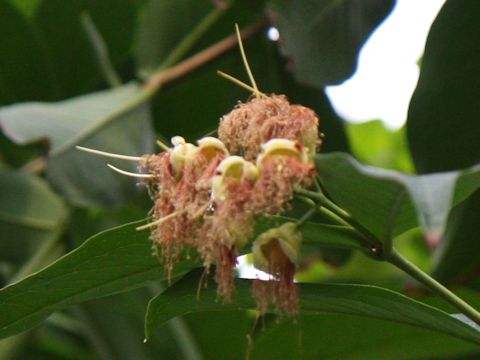 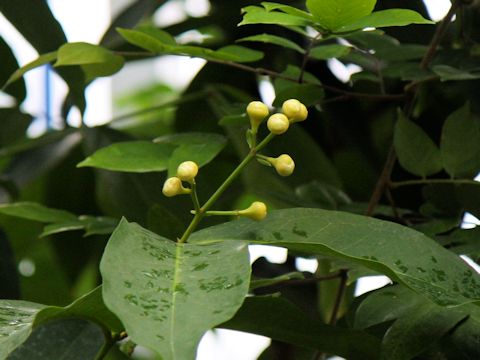 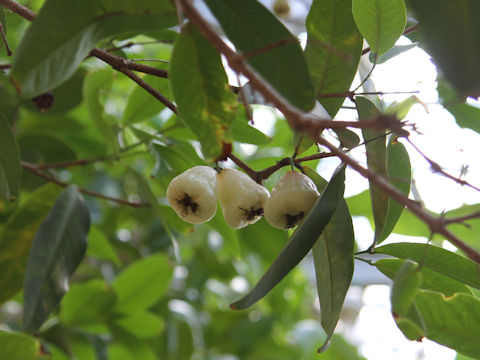 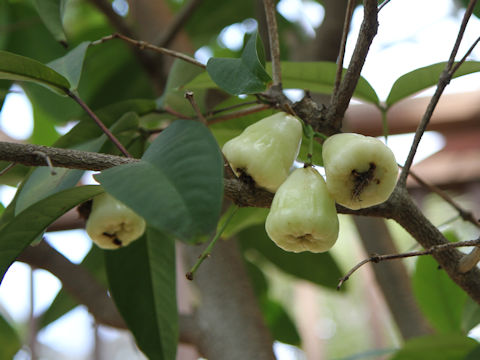 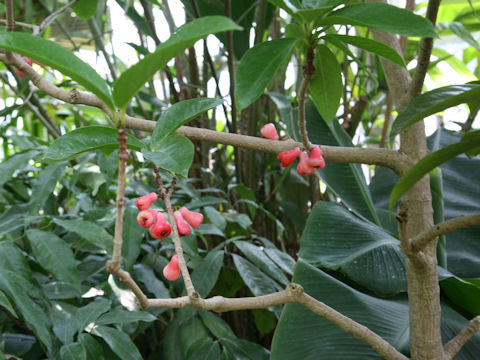 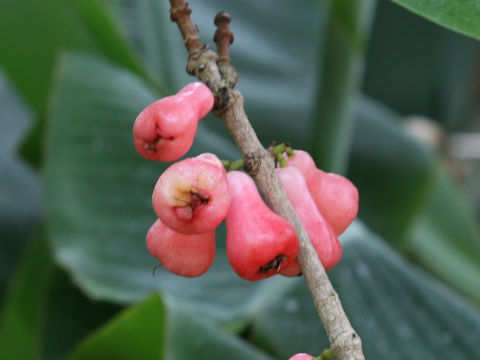 |
|
|
|
マレー半島からインドネシアが原産です。現在では、東南アジアで広く栽培されています。成長が早く、高さは10〜13メートルになります。葉は長卵形から楕円形で対生します。2月から6月ごろ、「ねむのき」のような白い花を咲かせます。果実は淡い緑色やピンク色に熟し、かすかな甘みと酸味があります。生食のほかサラダや果実酒に利用されます。名前は、中国名の「蓮霧」から。別名で「ジャワふともも(ジャワ蒲桃)」とも呼ばれます。 |
|
|
フトモモ科フトモモ属の常緑小高木で、学名は Syzygium samarangense。英名は Wax jambu、Java apple。 |
|
|
The Wax jambu (Syzygium samarangense) belongs to Myrtaceae (the Myrtle family). It is a semi-tall evergreen tree that is native to the Malay Peninsula and Indonesia. It is cultivated widely in Southeast Asia. This tree grows fast and can reach 10-13 m in height. The leaves are long-ovate to elliptic and arranged in oppositely. The white, mimosa-like flowers bloom from February to June. The fruits ripen pale green or pink, and have delicate sweet and acid taste. They are used as a raw diet, salad and fruit wine. |
|
|
[上・中1〜2] 大阪市鶴見区「咲くやこの花館」にて、2006年04月25日撮影。 [中3] 同上にて、2006年07月11日撮影。 [中4] 同上にて、2005年05月26日撮影。 [中5・中6] 群馬県安中市「碓氷川熱帯植物園」にて、2012年03月31日撮影。 [中7・中8] 茨城県那珂市「茨城県植物園」にて、2013年09月29日撮影。 [中9・下] 茨城県つくば市「つくば実験植物園」にて、2024年05月11日撮影。 |

|
|
Shu Suehiro |